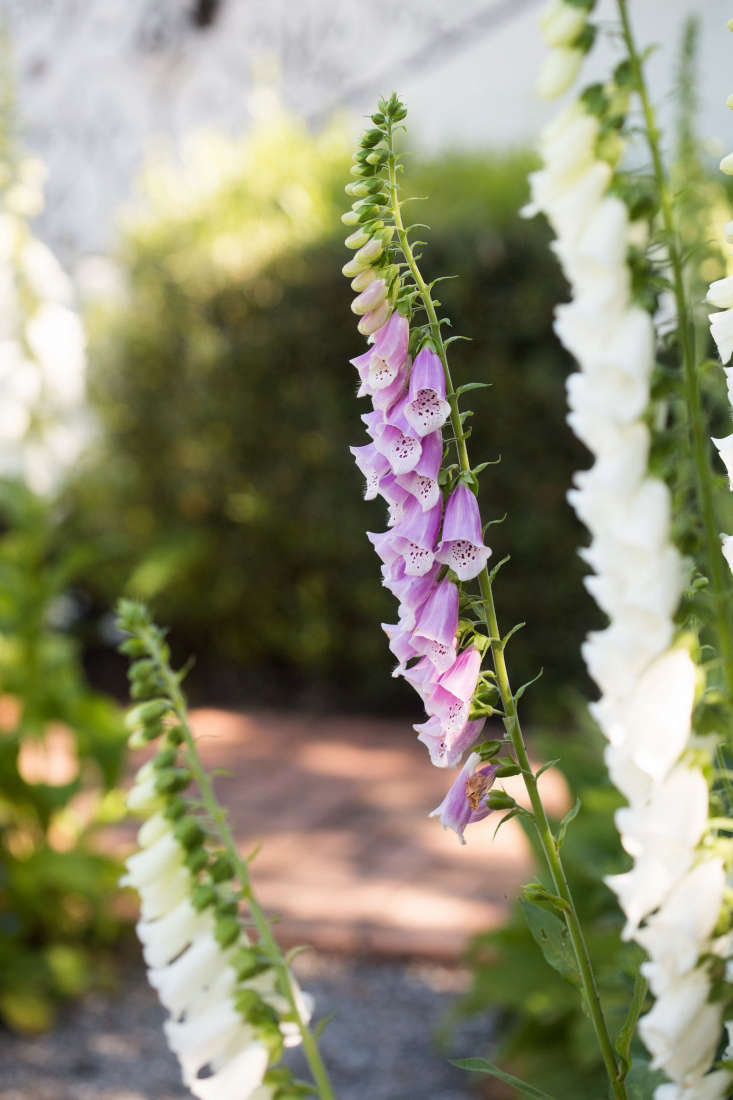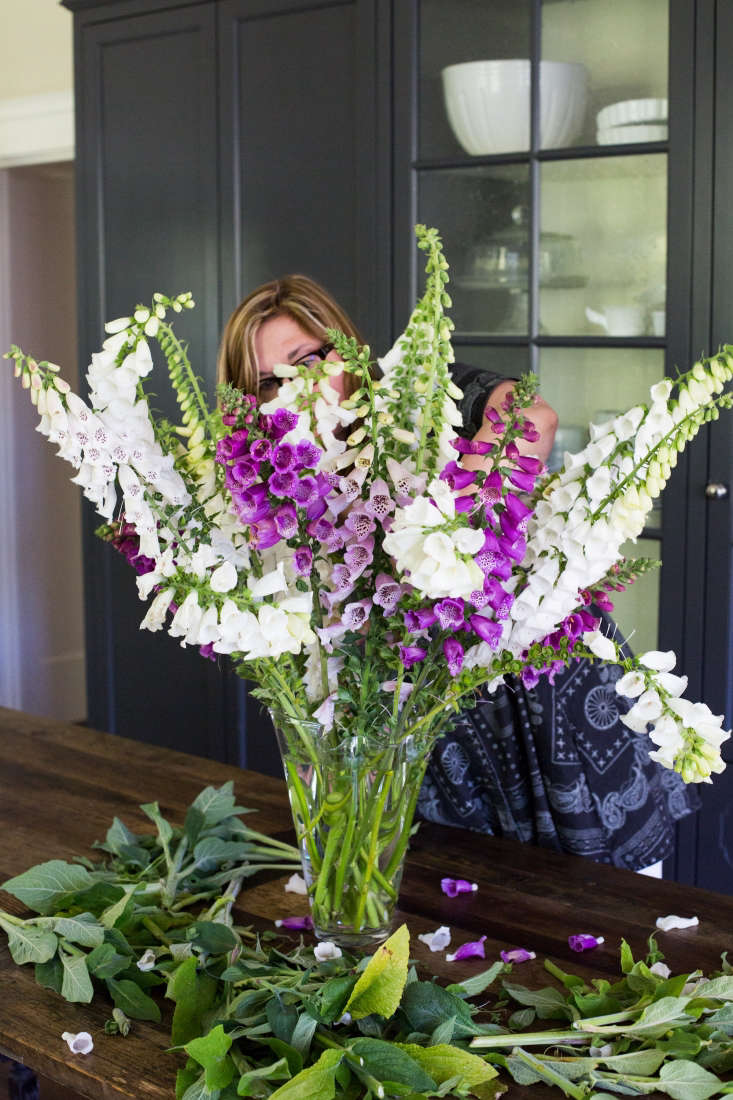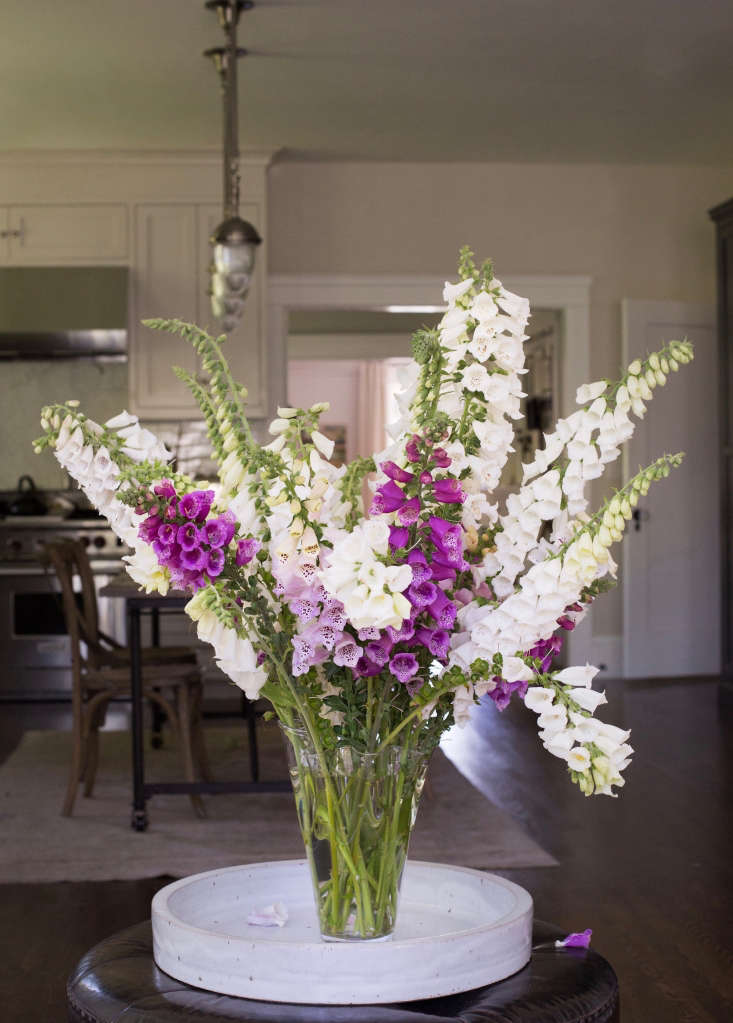Foxgloves behave like a bad boyfriend. Owing to their biennial nature and a tendency to self-sow freely, foxgloves usually don’t show up when or where you expect them. After they’ve trained you not to rely on them, suddenly you find them standing by the front door, turning on the charm.
But there are ways to make foxgloves do what you want. This spring after the foxgloves arrived early and often, taking charge of my spring garden with flower spikes as tall as six feet, I decided to treat them like cutting flowers. Here’s a step-by-step guide on how to transform foxgloves into a simple (and showstopper) floral arrangement.
Photography by Mimi Giboin for Gardenista.

Foxgloves multiply, and this spring I have several clumps flowering in the far reaches of the garden. A few errant flowers are blooming in the gravel path. But the real surprise this year was the purple foxgloves: where did they come from? I only plant white ones. The color mutation is just one more show of willfulness.
1. Put foxgloves in water.

Foxgloves are thirsty; give them water right away to prevent wilting.
Tip: Before you go out to the garden to cut foxgloves, fill a large vessel—a bucket, florist’s bucket, or pitcher will do—with water and have it waiting for the flowers.

2. Strip leaves off flower stalks.

3. Give each flower a fresh cut.

Tip: Give each stalk an angled cut to increase the surface area (enabling it to drink more water).
4. Choose the right vase.

Tip: For tall, thick-stemmed flowers such as foxgloves (or, say, sunflowers) a high-sided vase—such as a graduated cylinder—is the best choice to hold each stem upright while allowing it to fall gently outward.
5. Allow foxgloves to drape over the vase.

6. Mix and match foxglove colors.



Tip: Foxgloves are easy to start from seed; more than two dozen varieties of Foxglove Seeds (in colors such as white, apricot, rose, purple, peach, and cream) are available for $1.99 to $3.99, depending on variety, from Swallowtail Garden Seeds.
7. Do not eat any part of a foxglove plant.

The medicinal powers of digitoxin as a treatment for congestive heart failure came to the attention of English physician William Withering in the late 18th century. In his book, An Account of the Foxglove and Some of Its Medical Uses, Withering described how in 1785 he heard of a medicine that “had long been kept a secret by an old woman in Shropshire, who had sometimes made cures after the regular practitioners had failed.”
Although the herbalist’s concoction contained 20 or more different ingredients, “it was not very difficult for one conversant these subjects, to perceive, that the active herb could be no other than the foxglove.”
Over the next decade, Withering treated dozens of patients successfully with the medication, which cardiologists still use today to treat some heart problems.
8. Keep adding water to the vase.

N.B.: It’s simple to cut and arrange flowers from your garden if you have all the materials handy. Make it easy on yourself by assembling everything you need ahead of time:
- 5 Favorites: French Flower Buckets
- 10 Easy Pieces: Garden Pruners
- 10 Easy Pieces: Simple Glass Vases Under $30
Finally, get more ideas on how to successfully grow foxgloves in the garden with Foxgloves: A Field Guide to Planting, Care & Design and more ideas on companion plants for foxgloves in our curated guides to Perennials 101.









Have a Question or Comment About This Post?
Join the conversation